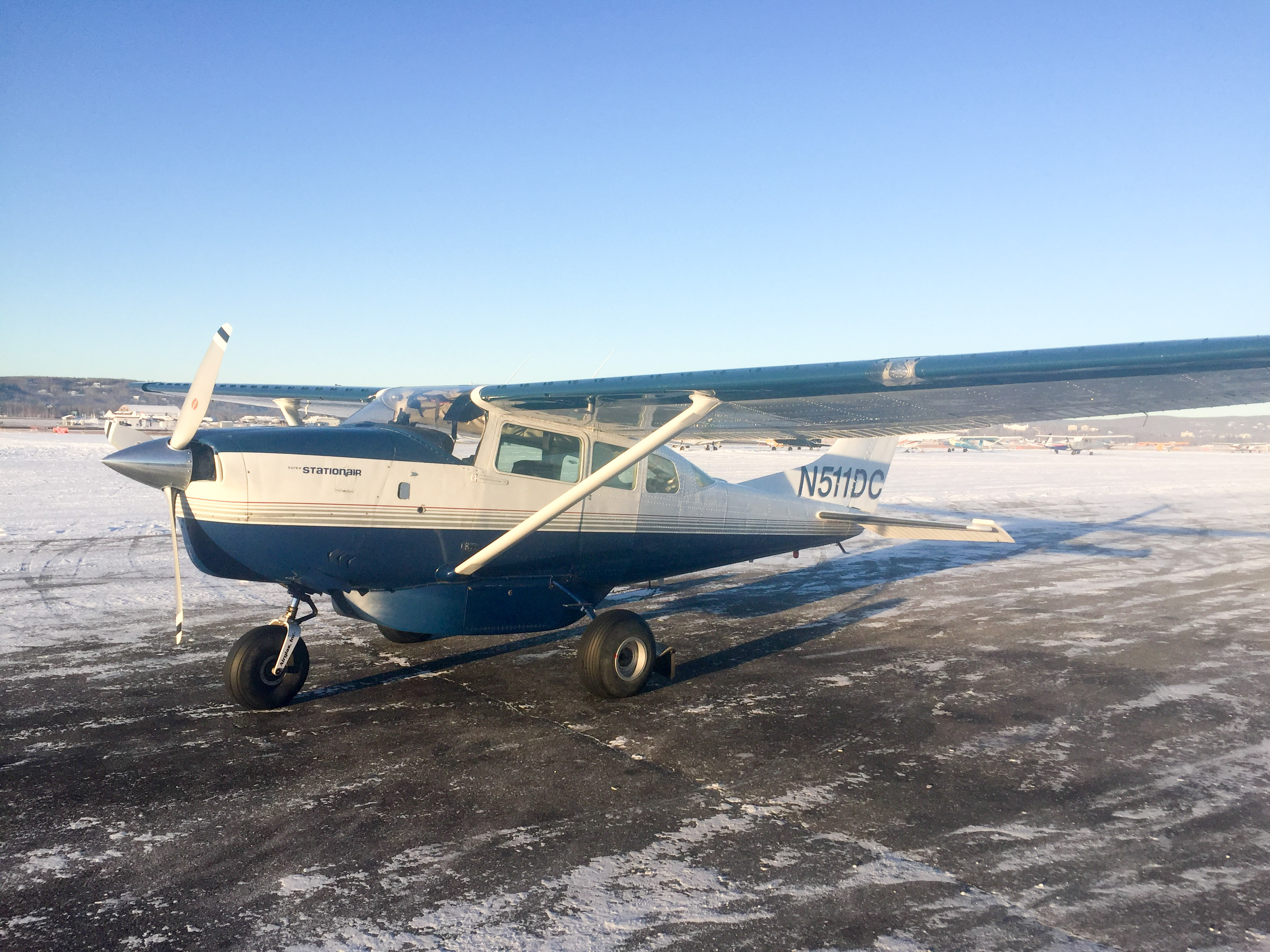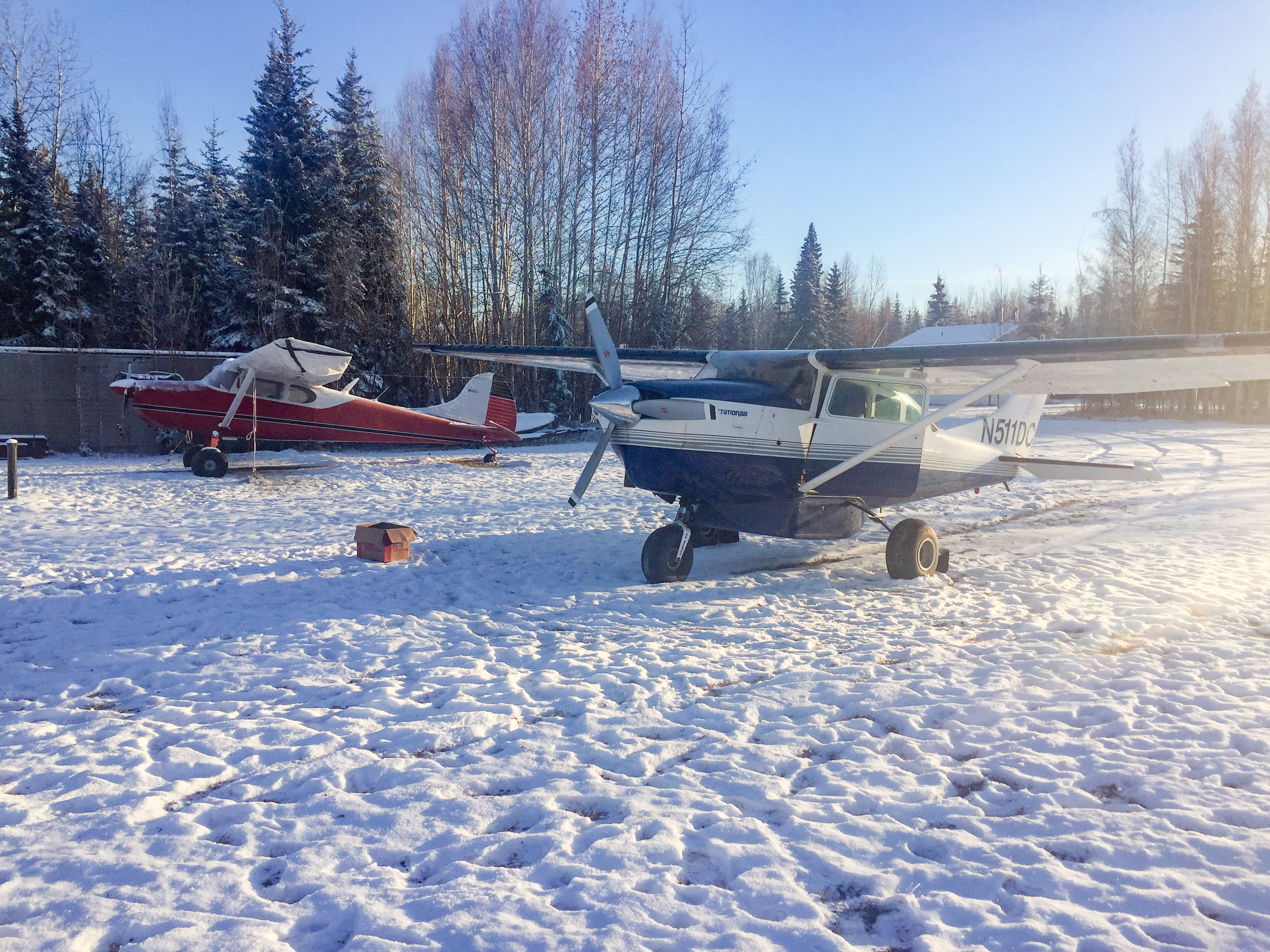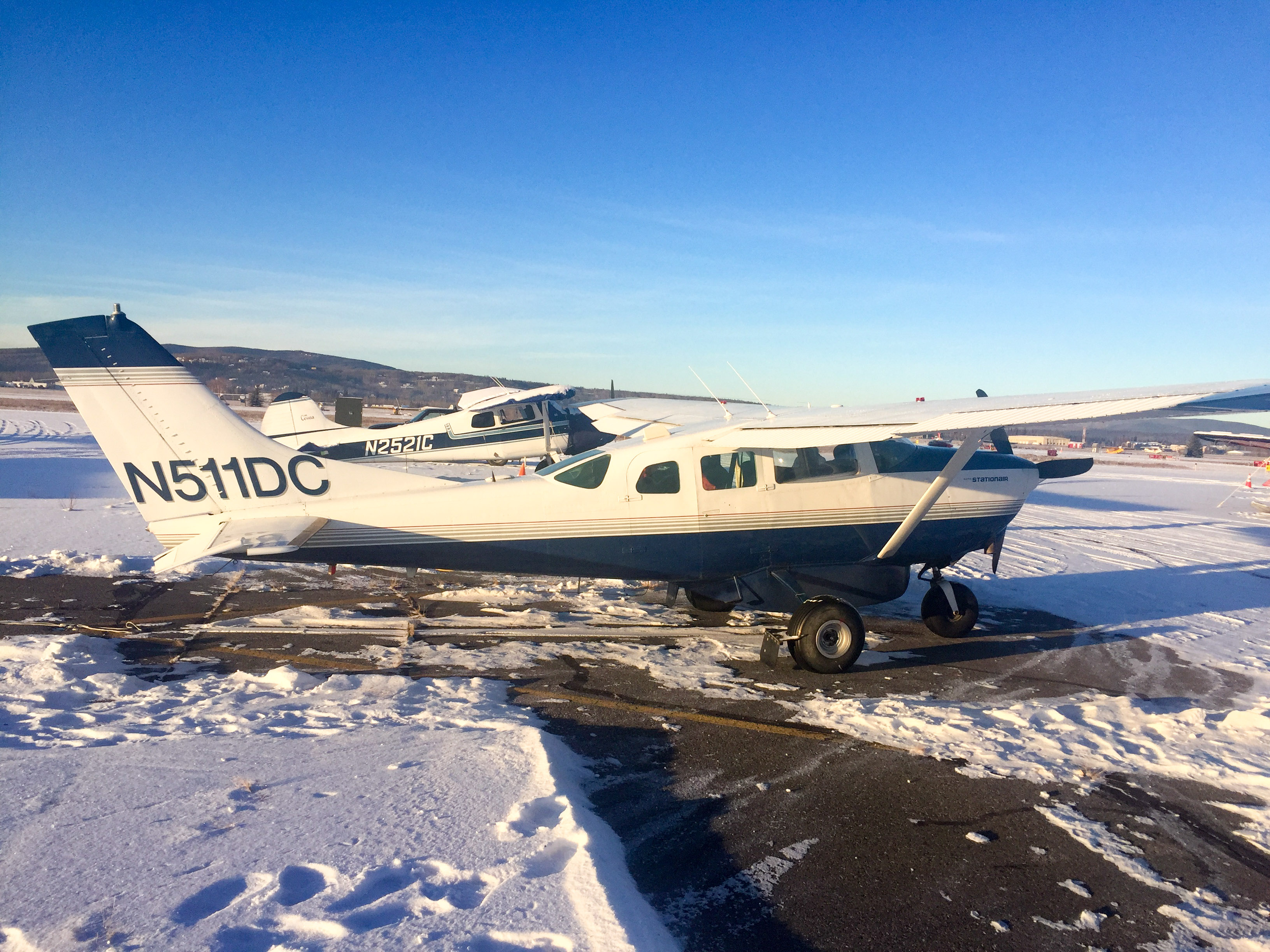Meet the Fleet!
It was a busy summer at Fairbanks Fodar, flying over 25,000 miles in total, and given the work in hand already for 2017 it seemed reasonable to invest in new aircraft and improved mapping technologies. This blog gives an overview of our two new aircraft purchased this fall.
First is a turbocharged Cessna 206. The 206 is a powerhouse among bush planes. It is one of the few nose-wheel aircraft with a nose-wheel strong enough for bush use. With a 300 hp engine and large cabin, it has the power to take off from small unimproved strips with large loads. Perhaps most importantly, with turbocharging it has the ability to maintain full sea-level power to over 25,000 feet, whereas it’s non-turbocharged sibling has a service ceiling of only 16,000 feet because it runs out of enough air to support combustion and lift. In terms of mapping, this means that not only will we have more power available for mapping over the mountains that we have been working at (eg, #8 and #10 here), but we now have the power for mapping over any mountains in Alaska (or the western hemisphere for that matter). The 206 is also a pleasure to fly, and with its large capacity fuel tanks and high payload we can carry enough fuel to fly more than 2000 miles. And with a top speed of over 160 mph, we can also utilize smaller weather windows at more distant locations. This 206 will likely become our primary mapping plane.
Second is another Cessna 170B. This 170 has a 180 hp engine, unlike the 145 hp engine in my trusty 21C. This engine upgrade is a popular one among 170 owners and really turns it into a different plane. The standard 170 is pretty good at everything, but not really great at any one thing. With the engine upgrade, however, it rivals both supercubs and Cessna 180s in terms of performance and cost. On the low end of short takeoffs and landings, these super 170s are on par with supercubs in flight competitions, with the differences being largely due to pilot skill rather than aircraft type. But unlike supercubs which have a top speed on the order of 80-90 mph, these super 170s can fly at 120-130 mph and carry significantly larger loads in terms of volume, as well as carry more fuel in their wings. They are just as fuel efficient as the standard 170 and much lighter and fuel efficient than 180s. This plane will likely become our primary field work plane, landing in remote off-field locations to support our mapping and scientific work.
In total that makes three aircraft for Fairbanks Fodar now. All three are capable of fodar mapping and all three are capable of off-field landing, each with specialized capabilities, so all are capable of backing each other up. This robust infrastructure will allow Fairbanks Fodar to tackle even larger projects than we have already, as well as position planes in strategic locations to support more spatially-diverse projects. And given how quickly next summer’s season is already filling up, it seems just in time!
Many thanks to Mark Hasner, Don Kirk, Brook Casey, and Bill Allen for their assistance and support with these purchases!

The new Cessna 206. With its large, turbocharged engine and huge fuel tanks, there is no terrain in Alaska we can’t map…

The new Cessna 170. With its 180 hp engine and huge fuel tanks, it can haul loads onto a glacier at 7000′ or make maps over huge areas.

The new 206 and 170 parked together.
 The new 206 and my trusty 21C in the background. Paints schemes almost match!
The new 206 and my trusty 21C in the background. Paints schemes almost match!
